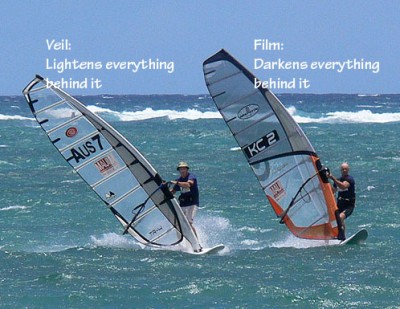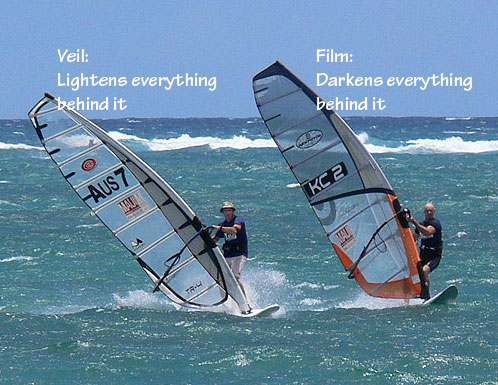
Films and veils are two visual phenomena that Dick Nelson teaches about in his Interactions of Color class. We learned to recognize them, how they behave, and how to recreate the phenomena. This photo, taken yesterday by my husband, has an example of both.
Unlike solid objects, which are opaque, films and veils are both translucent, allowing us to partially see through them. Common examples of films are sunglasses, tinted glass in windows, and bright or dark colored tissue paper. Shadows also behave as films. Films make everything behind them appear darker. Veils make everything behind them appear lighter. Examples are bridal veils, white tissue paper, and atmospheric mist.
In the photo above, both sails have portions that are opaque, and portions that behave as veils. In addition, the dark top of the sail on the right acts as a film. The spray raised by the sailors’ boards is a veil.
Our eyes and brains automatically take in all this information as we make sense of our world. Artists learn to see these details to create the effects they want.

